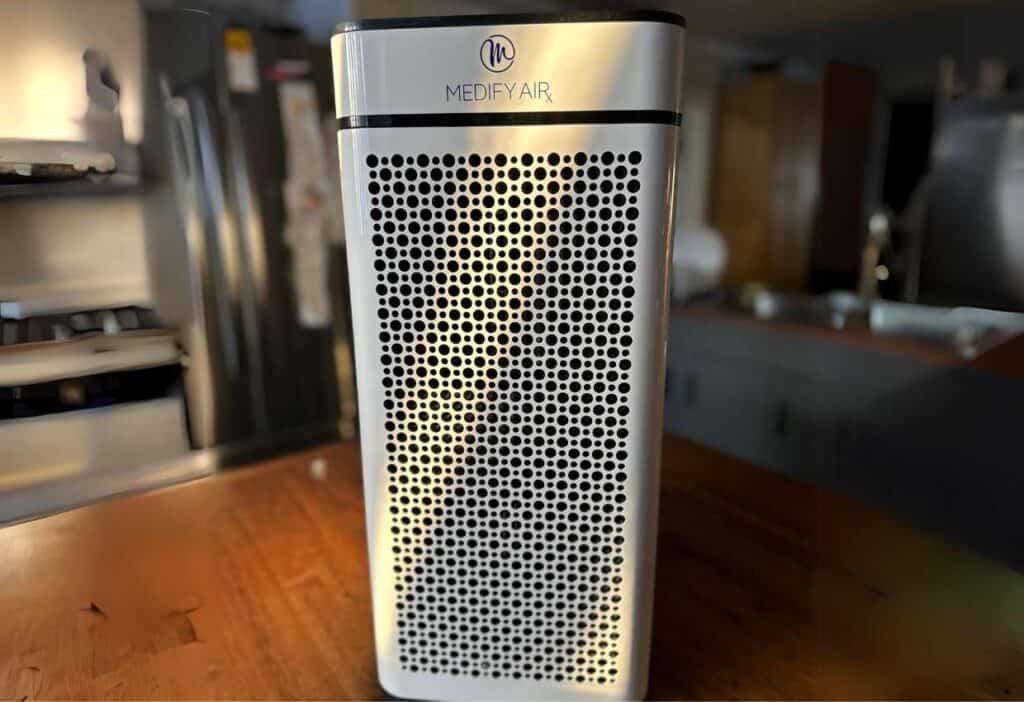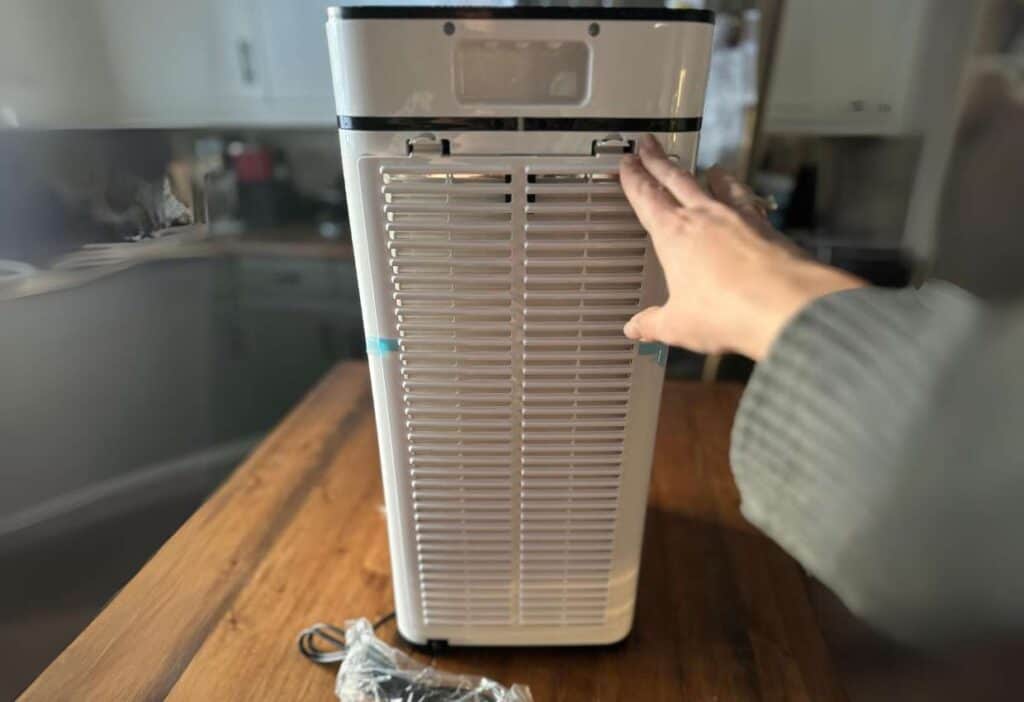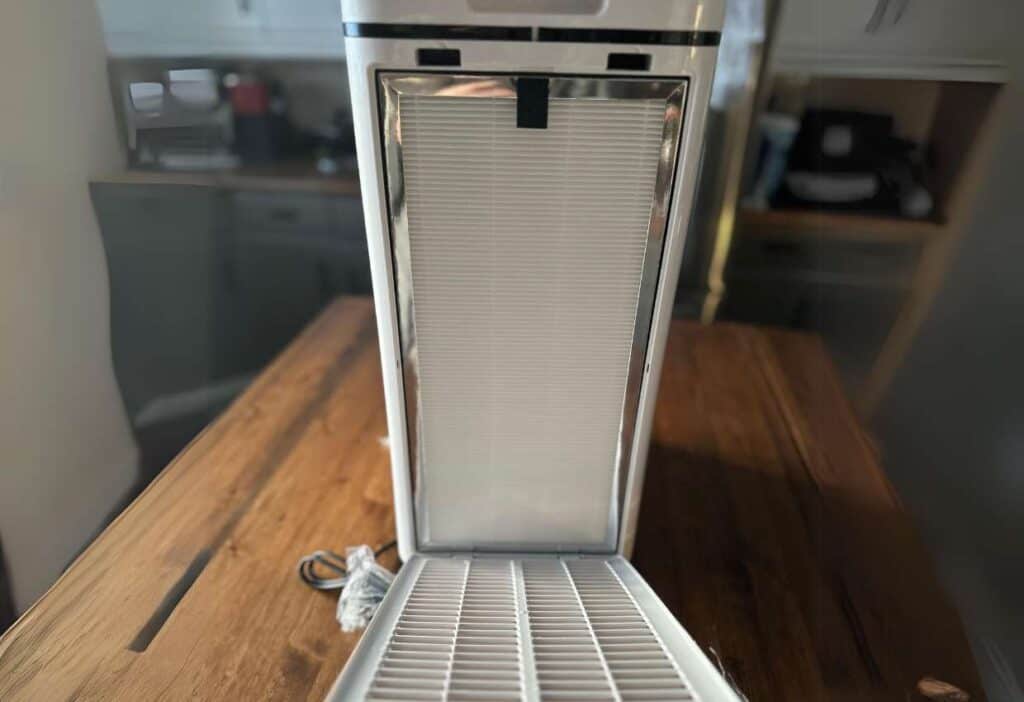Ever wished for cleaner air inside your home? An air purifier could help keep the air in your living space free of dust, smoke and allergens.

Air purifiers offer a simple solution to reducing or eliminating odors and pollutants indoors. Learn how they work, how to choose the best model for your home and the maintenance practices that will keep your machine running smoothly.
Understanding air purifiers
Air purifiers pull in your room’s air and run it through filters that catch and trap pollutants such as dust mites, smoke and pollen. It also helps remove pet dander, a consideration with many dogs, including the American Eskimo breed. These pollutants can negatively impact your health and comfort.
The heart of an air purifier is its filter system. The most common type is a HEPA, which stands for high-efficiency particulate air.
A HEPA filter is a dense mat that captures pollen and dust mites with particles as small as 0.3 microns, smaller than the width of a human hair. By removing these particles from air circulation, air purifiers help create a cleaner, fresher breathing space.
How air purifiers work

Air purifiers pull in dirty air, trap dust, pollen and smoke — and send out clean air with a fan. They work almost as a high-tech sieve; they catch what you don’t want to breathe.
In addition to the HEPA filter, activated carbon filters tackle chemicals and odors such as cooking odors, pet odors and even the scent of dirty sneakers while the fan circulates air. Together, these features help cleanse the air.
Air purifiers for dust management
Another benefit of air purifiers is their ability to manage dust. Air filters tirelessly remove tiny dust particles that can sneak into every nook and cranny. For anyone living in the suburbs or city, where construction, traffic and daily hustle contribute to indoor dust levels, an effective air purifier may help.
Important features in air purifiers
Some air purifier models offer features like low noise operation and energy efficiency. They come in different sizes, colors and shapes to match a variety of decors. Some models even include indicator lights to signal poor, fair or good air quality.
Choose a quiet air purifier with a lower decibel level if you plan to place it in rooms where people gather or sleep. You may opt for a model with an auto option that uses sensors to adjust the filtering rate.
Take into account energy efficiency, too. The Energy Star rating indicates energy efficiency and can help you estimate the machine’s energy usage. This is particularly important if you live off the grid and depend on solar or wind energy.
Finally, think about convenience features such as smart sensors or remote controls for easy adjustments from across the room. For example, Medify Air’s M-40 air purifier combines these practical considerations with a sleek design.
“As someone with asthma triggered by allergens, I’ve long had air purifiers in my home to help with cleaning the air to health ease my symptoms. After becoming a mom, I was surprised to learn that air purifiers are also an excellent way to help keep your kids healthier. This can help keep your children healthier as they age and begin to take in more air as they breathe.”
— Siobhán Alvarez-Borland, Birth and Postpartum
Combatting smoke with air purifiers

While a wood-burning fireplace, or even a new or antique wood stove adds charm to a living space, it may also add a smoky smell to a home. An air purifier can help with the smell, fine dust and ash particles that escape from the stove or fireplace. It pulls in smoky air and traps fine particles using a HEPA filter and an activated carbon layer before sending out clean air.
We heat our home with a large wood stove positioned in our great room, with the Medify Air M-40 air purifier operating approximately 16 feet away on the opposite side. Within a week of adding the air purifier, I noticed a reduction in the smell of wood smoke in our home. Even better, the purifier runs quietly and doesn’t disturb our family board game nights at the table right beside it.
Even homeowners without wood stoves or fireplaces may experience smoke in today’s changing weather environment. Massive wildfires now generate far-reaching smoke and pollutants that can infiltrate city and suburban homes. Air purifiers may help remove the wildfire smoke and contaminants from your home.
Air purifiers for large rooms
When selecting an air purifier for a room, size does matter. Larger rooms need an air purifier with enough power to clean the room’s air effectively.
Look for information on the square footage coverage of the model. Make sure it matches or exceeds your room’s dimensions.
Also, review the air change per hour or ACH rate. The ACH rate tells you how often the purifier can exchange all the air in a given space within one hour.
For larger rooms, aim high. An ACH rate of 4 means the air refreshes every 15 minutes. And don’t forget energy efficiency; bigger spaces mean longer run times and higher potential costs.
Air purifier maintenance

Keep your air purifier in top shape to maximize its efficiency and longevity. A well-maintained device works better, lasts longer and is more efficient.
Check the filters regularly. Replace HEPA filters according to the manufacturer’s schedule — usually every six months. However, double-check this if you have pets or allergies because they might make your filter work harder.
Clean the exterior vents and controls regularly to prevent dust from getting inside the unit, too. Just use a damp cloth, and avoid harsh chemicals that could damage sensitive parts. Or add this easy task to your children’s weekly chore charts.
Freshen your home with an air purifier
Air purifiers can help freshen the air in your home and filter out unwanted dust, smoke, pet odors and even cooking odors. Consider your lifestyle, desired features and room size before investing in one for your home. And remember that regular filter changes and simple maintenance can extend the life of your purifier.
Sarita Harbour is a homeschooling, homesteading mom and a long-time business and finance writer. She created An Off Grid Life to help people become more self-reliant. Sarita and her family live off the grid in Canada’s Northwest Territories.